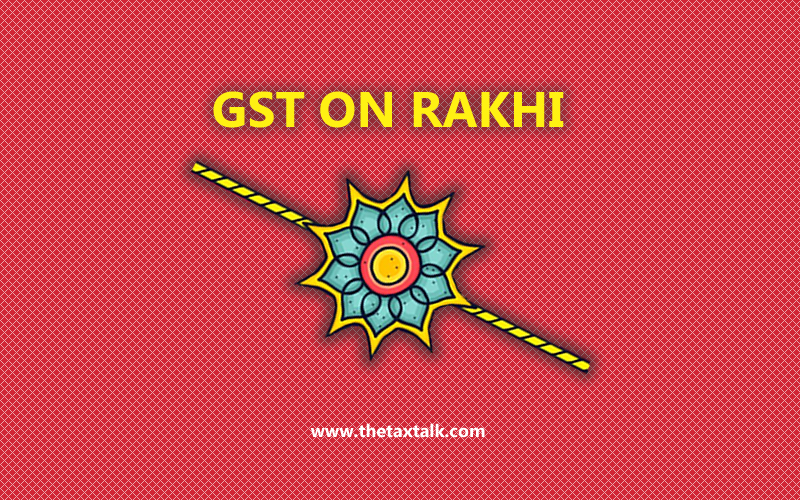![]()
GST on Rakhi
The upcoming festival rakshabandhan in which the women tie rakhi on her brother’s wrist.The markets are loaded with rakhi. Traders and manufacturers are concerned with GST on rakhi.
In GST there was no clarification on which tax slab rakhi falls in. Though the festivity and goods tax slab is 28 per cent, but not clear whether Rakhi falls under same.
The Central Board of Excise and Customs through FAQ’s on classification clarified that Rakhi, in form of kalava or raksha sutra will attract nil GST. Any other rakhi would be classified as per its constituent material and attract GST accordingly.
What is the GST rate on Rakhi?
- Puja samagri, including kalava (raksha sutra) attracts nil GST.
- Rakhi, which is in form of kalava (raksha sutra), will thus attract nil GST.
- Any other rakhi would be classified as per its constituent materials and attract GST accordingly.
AAR (Authority of Advance Ruling) West Bengal
AAR (Authority of Advance Ruling) in West Bengal clarified that some rakhis would attract GST as the exemption to rakhis would not applicable to all rakhis. A rakhi using glass beads attract 18% GST.
It further stated that “Rakhi” is not purely puja samagri as it is not an essential and integral part of any Puja or Religious Ceremony and therefore it cannot attract nil rate of GST or it cannot be considered to be exempt.
In current scenario “Rakhi” which are being manufactured are not always of Cotton thread i.e. Kalava instead there are Decorative “Rakhi”, Designer “Rakhi”, & Fancy “Rakhi”.
With reference to raw material also, it is not restricted to red & yellow cotton string (i.e. Kalava) but it also includes other elements such as zari, nylon and silk threads along with glass beads, plastic beads, coloured stones, metal pendants and rudraksha.
The main focus of the GST Act is to tap in all the points of supply and the characteristic which defines an item at the point of supply is of paramount importance.
Due to this AAR decision if Fancy Rakhi’s constituent materials are glass beads, stone, cotton thread and plastic beads which fall under Chapter 70, Chapter 70/71 (depending on the nature of the stone), Chapter 52, Chapter 39, respectively. Assuming that there are no other constituent materials undeclared in the literature submitted by them, under Rule 3(c), this “Rakhi” will be classifiable under Chapter 70/71 and will attract GST accordingly.
Notification No. 19/2018- Central Tax (Rate) Dated 26-07-2018
Government inserted Serial No. 152 in Exemption Notification No. 2/2017-Central Tax (Rate) dated 28.06.2017 as follows:
Rakhi (other than those made of goods falling under Chapter 71)
Implication of this notification is that Rakhi’s falling under all chapters except Chapter 71 are exempt.
What items falls under Chapter 71 of Customs Tariff Act
This chapter intends to tax all goods which contains natural or cultured pearls, precious or semi- precious stones, precious metals, metals clad with precious metals, and articles thereof; imitation jewellery etc.
What does Precious metal mean?
Precious metal means items made of silver, gold and platinum.
Thus it is concluded that Rakhi in form of Kalava attracts NIL rate of GST. Further
Rakhi made of precious metals as covered under Chapter 71 would be chargeable to GST as per applicable rates in Chapter 71.
[button color=”” size=”” type=”round” target=”” link=”https://thetaxtalk.com/”]home[/button] [button color=”” size=”” type=”round” target=”” link=”https://thetaxtalk.com/submit-article-publish-your-articles-here/”]Submit Article [/button] [button color=”” size=”” type=”round” target=”” link=”https://thetaxtalk.com/discussion-on-tax-problem/”]Ask Question [/button]

